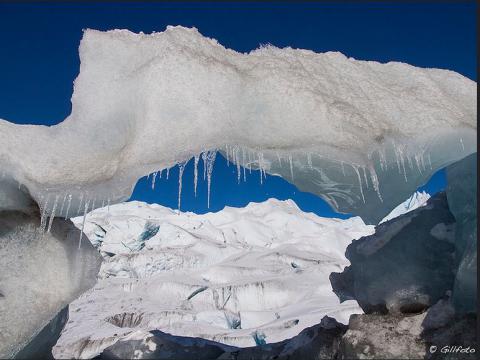Uncertainty is the engine of science, driving our quest to understand the universe. But today, the misunderstanding and misrepresentation of uncertainty in climate science is causing problems — problems that could potentially be solved if climate scientists and the public found a better way to communicate with each other.
There are certainly plenty of things climate scientists are certain about: Humans are tipping the earth's energy balance, so the world is warming and sea level is rising. The earth will continue to warm, rainfall will become heavier in many places (such as wet tropical regions), and sea level will continue to rise.
Big picture predictions like these are based in fundamental science involving observations and physical understanding that date back up to 200 years. But the details of our predictions — like how quickly temperatures and sea levels will rise — must come from computer models since we don't have a miniature earth with which to play. (It's not just climate science that has this difficulty; if you want to study the evolution of galaxies, it's easier to write computer code than to create 100 billion stars.) At the heart of climate models are basic laws of physics, like Newton's laws of motion, augmented by even more physics, chemistry, biology, and geology.
But a model is by definition a simplified representation of reality, which means it can never be perfect. "All models are wrong," said statistician George Box, "but some are useful." In addition, their predictions partly depend on the numbers scientists plug in. And sometimes we can't know for certain what those numbers should be.
We're studying an enormously complex planet. For example, over the past 17 years or so there has been a slowdown — even a pause — in the rate of warming of the atmosphere. We're confident the climate is still changing, because the oceans are still warming, land is losing ice, and sea level is rising. We predict the atmosphere will start to warm again after this temporary blip, and we think there are several contributing factors to the pause, including a change in movement of heat around the planet, a dip in the brightness of the sun, and reflection of the sun by pollution and volcanic eruptions — but we don't yet know the exact contributions of each.
The very definition of climate has uncertainty at its heart. While weather is the physical state of the atmosphere — temperatures, rainfall, and pressures that we can measure — climate can be thought of as the probability of different types of weather occurring. A probability is, of course, a statement of uncertainty: "We predict the weather will most often be X, sometimes be Y, and occasionally be Z."
But this kind of uncertainty is not an indication that we don't know what we're talking about. It only means there are limits to our understanding, which we redefine with each new result. Scientists in any area of cutting-edge research will disagree with each other as they search for the right path. But because climate science is politicized, these disagreements are often sold as proof of unreliable science. For example, some scientists predict global average sea level rise in the highest greenhouse gas emissions scenario will likely be 20 to 30 inches by the end of the century. Others predict it will very likely be more than 35 inches and could be over six feet.
The two groups look at the problem in very different ways — the first method is based in physics, the second in statistics. And that's interesting, because it shows the evolving process of science.
Unfortunately, inherent scientific uncertainty allows people to spin researchers' results. Last year, we held a press conference for a project I worked on called ice2sea, which made projections of future sea level using methods based in physics. Some headlines indicated "Sea level rise to be less severe than feared" because the stories compared our findings to statistics-based studies. Others indicated "Risk from rising sea levels worse than feared" because the stories compared our findings to a previous report that also used physics but didn't tally every possible part of sea level rise. One website wrote, "The end of London as we know it."
In short, each media outlet told the story it wanted to tell.
Complexity and uncertainty create extra difficulty for experts in explaining their results, and for non-experts in understanding them. Climate science is not sound bite science.
And climate scientists haven't helped. We haven't sold the idea of uncertainty as not only an inevitability, but as a positive thing because of how it drives scientists to understand the unknown. The pause in warming of the atmosphere surprised the media and public, but scientists expected it could happen in the short-term. Why didn't we make that clear? In part because we sometimes oversimplify the way we communicate to the public.
We've also done a bad job at being available — how many climate scientists can you name? We've mostly kept our heads below the parapet for fear of attracting fire by communicating complex science in a politicized atmosphere. We need to be braver.
There are hundreds of climate scientists on Twitter, and the small number of us who blog is growing. But we're mostly engaging with people who are already passionate, whether they're environmentalists or dissenters. We want to talk to more people from the middle ground — the fence-sitters and the understandably confused.
That's why I'm curating a Twitter list of climate scientists, active researchers who are studying climate change and its effects on life. If you're a climate scientist, or know one, tweet me to be added to the list. To ask a climate scientist a question, feel free to direct it toward scientists on the list.
If you're uncertain about uncertainty, come and find us. We'd love to talk.
Dr. Tamsin Edwards is a climate scientist at the University of Bristol studying uncertainty in climate models. Follow her on Twitter: @flimsin


Spread the word